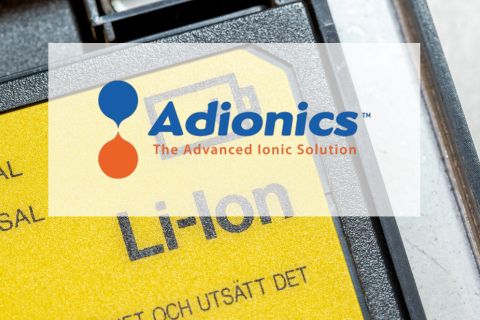
Suncor’s in-situ project is located on leases known as Firebag. The steam-assisted gravity drainage technology uses underground wells to inject steam into the oil. (Source: Suncor Energy)
The days of Alberta “dirty oil” may be numbered, judging by sustainability reports released this week from two of Canada’s biggest oil sands companies.
Suncor Energy and Cenovus Energy pledged in 2016 to reduce the carbon intensity of their crude oil by 30% and 33%, respectively, within a decade, and both claim they are making rapid progress toward their goals. Both companies also believe lowering emissions will significantly lower production costs.
“It’s evident that to remain a central part of the energy equation, oil and gas producers need to be carbon-competitive and cost-competitive,” Suncor CEO Steve Williams said in the foreword to the company’s report, essentially echoing the message from Cenovus CEO Brian Ferguson. “We are moving aggressively toward the goal of harnessing new technology that transforms the GHG [greenhouse gas] footprint of our operations and our impact on the life cycle of our product. Technology and innovation are taking us there.”
Oil sands crudes produced in situ have a high carbon-intensity because the gooey bitumen must be heated to 200 degrees C or more to get it to flow in a process called steam-assisted gravity drainage (SAGD), which requires large amounts of natural gas. Alberta companies like Suncor and Cenovus are looking for ways to reduce or eliminate natural gas from SAGD wells.
Some of the technology is a bit fanciful like Suncor’s electromagnetically assisted solvent extraction, which basically uses a big microwave to heat up water already in the reservoir, then adds a solvent to further dilute the bitumen. Another technology Suncor has tested, called the Nsolv process, uses vaporized propane or butane to heat the reservoir to only 60 C, enabling the solvent to more easily dilute and “mobilize” the bitumen. Suncor estimates Nsolv could reduce SAGD energy use by 80%.
In fact, solvent seems to be incorporated into most of the new technologies and processes. Cenovus spokesperson Brett Harris said an email that his company is planning to incorporate solvent-aided technology into a new project at Narrows Lake in northern Alberta, though no investment decision has yet been made to restart construction at the project.
Cenovus is supporting the cooperative development of GHG-reducing technology as a member of Canada’s Oil Sands Innovation Alliance, which recently launched a $20 million CarbonX Prize to encourage the development of new technologies to turn flue-gas carbon emissions into useful products.
Kevin Birn, oil sands dialogue director for IHS Markit, cautioned that SAGD technologies that unlocked in situ commercial production are only 16 years old. Those technologies required years of R&D investment and careful development before they were ready for the field. “Solvents may be the next iteration of SAGD. [They] may define the next 16 years of oil sands development,” he said in an interview. “There is a reason to be optimistic, and [the] industry may be poised for the next chapter in the future of the oil sands.”
The Canadian Energy Research Institute released a study this year that described six “technology pathways” for in situ producers like Suncor and Cenovus. Picking any one of the six would not only drive down emissions, but also lower production costs by 34% to 40%.
Producers have plenty of incentive in today’s low-price environment given that diluted bitumen and bitumen upgraded to synthetic oil “have the highest average production costs and GHG emissions when compared to other world crude oils,” according to Dinara Millington, research vice president for the Canadian Energy Research Institution. She pointed out that more optimistic industry players think technology might lower oil sands crude’s carbon-intensity below that of conventional oil.
Both the Alberta and Canadian governments are interested in having the oil sands, which is a major source of tax revenue and has huge economic impacts in provinces outside Alberta, be more carbon and cost-competitive. Alberta has taken the policy lead and is implementing a three-pronged set of regulations that were developed in conjunction with producers: a 100 megatonne emissions cap, a carbon levy and output-based allocations (OBA).
OBAs are intended to reduce the carbon tax impact operations while still providing an incentive to reduce emissions, said Kent Fellows, who recently co-authored a study on OBAs with other energy economists from the University of Calgary’s School of Public Policy. He pointed out that “the devil is in the details,” and he will watch closely when the final regulations are released “to see what those details look like because output-based allocations should prove to be a very effective tool to mitigate that [carbon tax] cost and to make sure that we're targeting the emissions that we want to target.”
Fiona Jones, general manager of sustainability for Suncor, said oil sands investors should be encouraged by producers’ ability to be competitive in a carbon-constrained world.
“So while often characterized as the oil basin most vulnerable to a low oil demand scenario, the very long operating life and low decline rate of our assets are, paradoxically, a competitive advantage— both under a scenario of declining demand for crude oil and a correspondingly low oil price,” she said. “If we are to remain competitive and resilient, we must continue to aggressively lower costs and carbon intensity throughout our business.”
Harris of Cenovus agrees. He believes Canada has a tremendous opportunity to become a global supplier of carbon-reducing technologies.
“With Canada’s vast resources, we also have the opportunity to become a preferred supplier of low-carbon oil to the world,” Harris said.
Recommended Reading
2024 E&P Meritorious Engineering Awards for Innovation
2024-11-12 - Hart Energy’s MEA program highlights new products and technologies demonstrating innovations in concept, design and application.
EnerMech Secures Contract with Major North Sea Operator
2024-11-13 - EnerMech will monitor the condition of the U.K. assets in accordance with safety and operational standards.
No Good Vibrations: Neo Oiltools’ Solution to Vibrational Drilling Problems
2024-09-10 - Vibrations cause plenty of costly issues when drilling downhole, but Neo Oiltool’s NeoTork combats these issues, enhancing efficiency and reducing costs.
BP to Use Palantir Software to Improve AI in Operations
2024-09-09 - BP and Palantir have agreed to a five-year strategic relationship in which Palantir’s AIP software will use large language models to improve BP operations.
Adionics Unveils Lithium Extraction Technology For Recycled Batteries
2024-09-09 - The Paris-based company said its liquid-liquid process achieved lithium recoveries of up to 98% across a range of brine concentrations.
Comments
Add new comment
This conversation is moderated according to Hart Energy community rules. Please read the rules before joining the discussion. If you’re experiencing any technical problems, please contact our customer care team.






